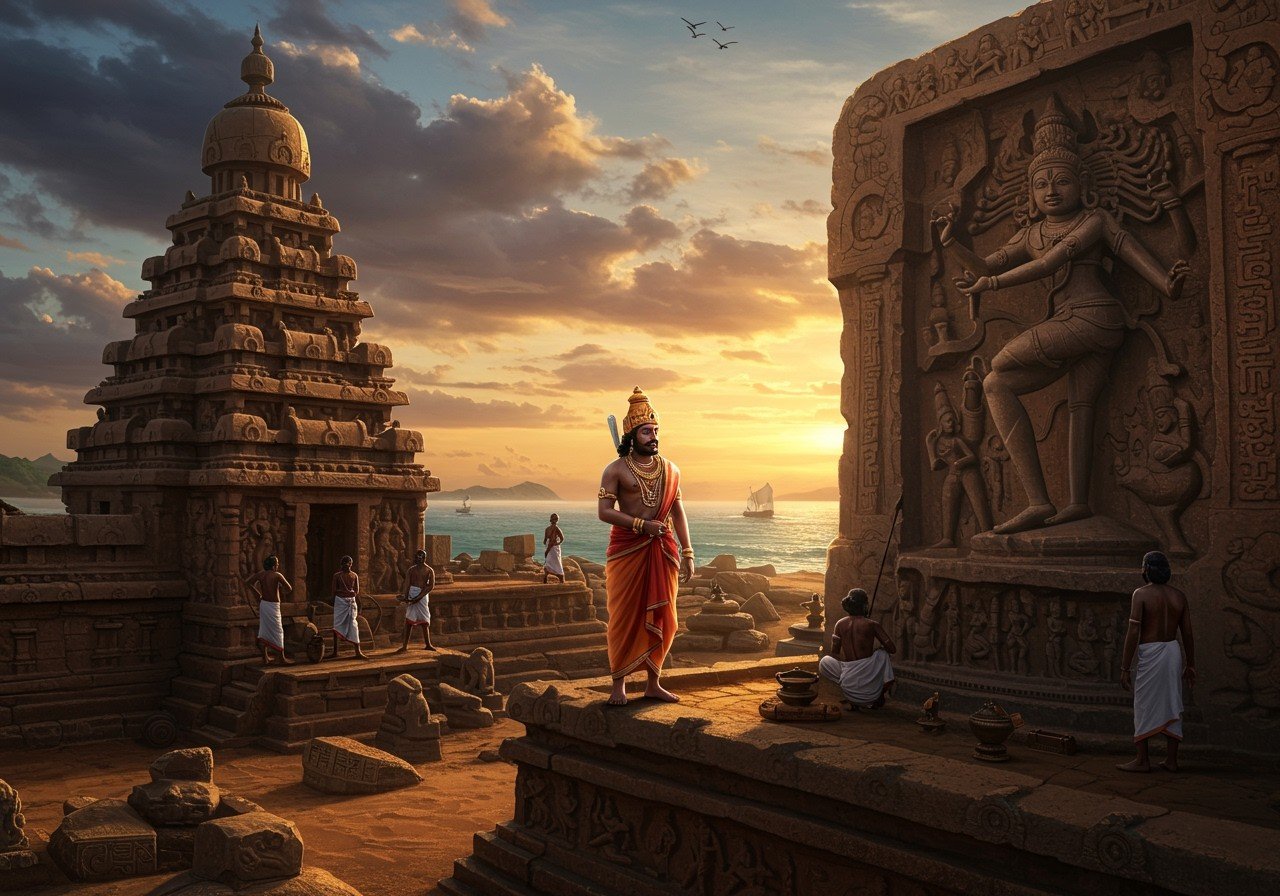
The Pallava Dynasty, a powerful South Indian empire, reigned from 275 CE to 897 CE, leaving an indelible mark on the region’s art, architecture, and culture. This article delves into the legacy of the Pallava Dynasty, exploring their renowned rulers, remarkable achievements, and enduring influence on Indian history. We’ll trace their rise to power, examine their notable monarchs, and marvel at the architectural wonders they bequeathed to posterity.
The Rise of the Pallavas
Emerging in the early centuries of the Common Era, the Pallava Dynasty originated in the Tondaimandalam region (present-day northern Tamil Nadu). Initially serving as feudatories to the Satavahana Empire, they eventually asserted their independence. Key factors contributing to their ascent include strategic matrimonial alliances, successful military conquests, and shrewd political alliances. Kanchipuram, a renowned center of learning and culture, served as their early capital. Their expansionist ambitions led to conflicts with neighboring kingdoms, including the Chalukyas and the Pandyas. The Pallavas played a pivotal role in disseminating Dravidian culture and the Tamil language.
Illustrious Pallava Monarchs
Several distinguished rulers shaped the Pallava legacy:
- King Simhavishnu (c. 575-600 CE): Consolidated Pallava authority and expanded their territorial control, laying the groundwork for future rulers.
- Mahendravarman I (c. 600-630 CE): A multifaceted scholar, Mahendravarman I excelled in various fields, including arts, literature, and military strategy. His patronage of the arts led to the creation of numerous rock-cut temples.
- Narasimhavarman I (c. 630-668 CE): Celebrated for his triumphs against the Chalukyas and his patronage of the arts, particularly the magnificent rock-cut temples at Mahabalipuram, showcasing the dynasty’s architectural prowess.
- Narasimhavarman II (c. 700-728 CE): Continued the tradition of architectural excellence with the construction of the Shore Temple at Mahabalipuram, a testament to Pallava engineering and artistry.
These kings were renowned for their administrative skills, promotion of trade, and fostering a cosmopolitan society.
Architectural and Cultural Marvels
The Pallavas are celebrated for their remarkable contributions to South Indian architecture:
- Rock-cut temples at Mahabalipuram: These UNESCO World Heritage Sites, including the Pancha Rathas and Descent of the Ganges, exemplify the Pallava’s mastery of rock-cut architecture. These structures are not only visually stunning but also hold immense religious significance.
- Shore Temple: Constructed by Narasimhavarman II, the Shore Temple stands as an exquisite example of early structural temple architecture, showcasing the dynasty’s evolving architectural style and engineering skills.
- Brick and stone temples: Structures like the Kailasanathar Temple in Kanchipuram demonstrate the Pallavas’ expertise in traditional temple construction using brick and stone. This temple is renowned for its intricate carvings and grandeur.
Their patronage extended to diverse art forms, including music, dance, and literature. The Pallavas nurtured scholars and poets like Dandin, who composed works in both Sanskrit and Tamil.
Explore the architectural wonders of the Badami Cave Temples, built by their rivals, the Chalukya Dynasty.
Discover the Kandariya Mahadeva Temple and delve into its religious significance and history.
Honoring the Pallava Legacy Through Sacred Rituals
The Pallava Dynasty’s profound connection to spirituality and religious practices continues to inspire modern-day rituals. At Poojn.in, we offer a wide selection of products to support these sacred traditions:
- Temple Worship Items: Discover authentic brass and copper items such as deepams (oil lamps) and kalash (sacred pots), reminiscent of those used in Pallava-era temples. These items add a touch of traditional authenticity to your worship space.
- Ritual Essentials: Access pure and high-quality materials for performing puja (worship), including dhoop (incense), agarbatti (incense sticks), and specialized puja items that align with traditional Vedic practices. Ensure your rituals are performed with the utmost reverence.
- Sacred Texts: Explore our collection of religious texts and prayer books that contain ancient wisdom and rituals passed down through generations, offering a deeper understanding of the spiritual traditions valued by the Pallavas.
- Yajna Materials: Find complete sets of havan samagri (fire ceremony materials) and other items necessary for conducting sacred fire ceremonies, adhering to age-old traditions. Experience the spiritual power of these ancient rituals.
Poojn.in guarantees the authenticity of these ritual items, enabling you to continue the spiritual practices that the Pallava rulers once championed. Visit www.poojn.in to explore our comprehensive range of traditional puja items and keep these ancient customs alive in your home. You can also find relevant products like Bel malas, Tulsi malas, Shiva Lingams, and Adiyogi statues to enhance your spiritual practice.
Enduring Legacy
The Pallava Dynasty’s legacy stands as a testament to their remarkable contributions to South Indian history. Their accomplishments in art, architecture, and governance left an enduring impact, inspiring admiration and respect. The Pallava kings, through strategic brilliance and cultural patronage, established foundations upon which subsequent dynasties built. The rock-cut temples of Mahabalipuram, the grand Shore Temple, and the meticulously crafted literature of the Pallava period serve as enduring monuments to their influence. Their emphasis on education, culture, and Hinduism has left a lasting mark on Tamil Nadu and the broader Indian landscape. The Pallava Dynasty’s story is not merely a historical chapter but a living tradition that continues to enrich our lives and culture.


